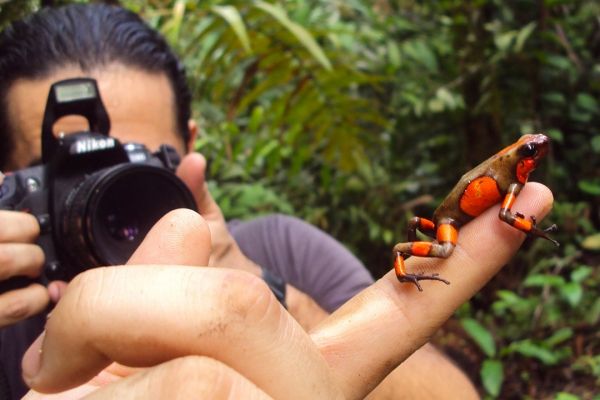The origin of an understudied hybrid population of poisonous frogs—highly endangered colourful animals that live deep in the Colombian jungle—is the result of natural breeding and not caused by wildlife traffickers moving them, a University of Saskatchewan (USask) study shows.
“We found that these unique hybrid frogs appeared more than 20 years ago—before they became the target of illegal trafficking—and live only in a small patch of jungle,” said USask biology researcher Andrés Posso-Terranova. “Our study will help the Colombian government understand what these frogs are and why they need to be saved and preserved.”
The study, recently published in the journal Molecular Ecology, shows that the hybrid frogs are interbreeding between two known “pure” species—Oophaga anchicayensis and the critically endangered Oophaga lehmanni. The USask findings indicate that the hybrids do not pose a genetic threat to the other frog species but rather co-exist healthily with the parent populations.
“These hybrid frogs aren’t a threat to the other two species, but benefit the ecosystem as a healthy addition to the genetic diversity of the tropical rainforest,” said Posso-Terranova. “Genetic variation usually ensures stronger, more disease-resistant populations, both animals and plants. That’s why it’s important to preserve these frogs.”
Continue reading at University of Saskatchewan.
Image via José Andrés.


